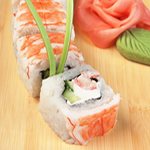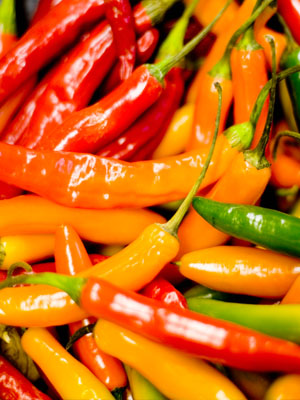As it turns out, the over-used phrase appearances can be deceiving applies to more than just people. While we all strive to eat wholesome meals on a daily-basis, there’s often more than meets the eye with certain so-called health foods. Some can pack in more calories than snacks we wouldn’t do so much as glance at in the grocery store. Watch out for these foods next time you’re heading out for dinner, or making a trip to the supermarket.
Sushi Rolls
While traditional sushi dishes are usually nutritious and low-in-fat, it’s the westernized versions with all the added ingredients that are often loaded with calories. Not only that, but the quantities are much larger. Depending on the size of the roll and all the additional stuffing (fried shrimp and cream cheese), a dish – typically eight pieces – can add up to almost 800 calories. Eek! The solution? Stick to standard options offered at authentic Japanese restaurants, like a vegetable roll (not fried!) or classic california roll.
Dried Fruit
Whether the fruit is freshly picked from its tree branch or left to dry out in the sun, many believe it’s just the appearance of the fruit that’s changed. If only this were true. On average, dried fruit can rack in three times as many calories than its fresh counterpart. Yikes. This is because most contains added sugar and trans fat – so make sure you’re reading those labels! The best rule of thumb: think of dried fruit as a garnish instead of the main dish. Raisins are a perfect example. We would gladly munch on a vine-full of grapes for a mid-day snack, but an entire bin of raisins? Better suited atop our morning cereal.
Granola
Most of the core ingredients in granola are healthy, but many store-bought brands are full of contents that are, well, not. The key? Make no assumptions, and always read the ingredients. The reason most granola is so tasty, is that it is full of sugar, corn syrup or some other delectably sweet ingredient. If the granola has five grams of sugar or less, it passes the health test. The majority of granola on the shelves these days are also high in fat content. Instead, scope out granola that contains an assortment of nuts and seeds, and add your own natural sweetener like agave.
˜Low-Fat’ Muffins
When a product claims to be low in fat, that doesn’t translate to it being healthy. In fact, if that’s the only health benefit advertised, chances are it has downsides too. While it’s true that home-baked muffins can be nourishing (using apple sauce instead of butter or oils), it’s the scrumptious goods at our local bakery that we’re taking about. When a muffin is advertised as ‘reduced in fat’, that just means it’s lower in fat compared to a standard muffin. While low fat blueberry muffin at Starbucks only has three grams of fat, it packs in over 400 calories, and 57 grams of sugar, which turns into fat anyways.
Wraps
Before we begin to consider what to put inside it, a wrap on its own can hold up to 300 calories. The surface area is much wider than a bread or bagel too, which means you’re likely to load it up with more toppings and dressing. See our point? While we don’t want to jump right out and say wraps are bad for you, it’s the calorie content you need to be on the lookout for. The solution? Instead of eating a wrap solely on it’s own, fill it up with all the nourishment you want, and eat half for lunch with a hearty bowl of soup. Save the other half for later, or share it with a friend.











